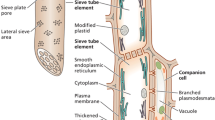Abstract
Phototactic responses of maize weevil, Sitotroga zeamais, adults to five light-emitting diodes (LEDs) were evaluated and compared with the commonly used luring lamp (BLB). Under optimal light conditions, the red LED (625 ± 10 nm) exhibited the highest attraction rate (59.8 %), followed by the yellow LED (590 ± 5 nm, 52.3 %), the infrared LED (730 nm, 51.9 %), the green LED (520 ± 5 nm, 46.7 %), the blue LED (470 ± 10 nm, 45.3 %), the ultraviolet LED (365 nm, 32.7 %), and the BLB (27.3 %). Moreover, the red LED was approximately 2.19 times more attractive than that of the BLB. These results indicate that a red LED trap may be useful to control S. zeamais adults.

Similar content being viewed by others
References
Adams JM (1976) Weight loss caused by development of Sitophilus zeamais (Motsch.) in maize. J Stored Prod Res 12:269–272
Briscoe AD, Chittka L (2001) The evolution of color vision in insects. Annu Rev Entomol 46:471–510
Dobee P (1974) The laboratory assessment of the inherent susceptibility of maize varieties to postharvest infestation by Sitophilus zeamais Motsch. (Coleoptera, Curculionidae). J Stored Prod Res 10:183–197
Hidalgo E, Moore D, Patourel GL (1998) The effect of different formulations of Beauveria bassiana on Sitophilus zeamais in stored maize. J Stored Prod Res 34:171–179
Jeon JH, Oh MS, Cho KS, Lee HS (2012) Phototactic response of the rice weevil, Sitophilus oryzae Linnaeus (Coleoptera: Curculionidae), to light-emitting diodes. J Korean Soc Appl Biol Chem 55:35–39
Jeon JH, Kim MG, Lee HS (2014) Phototactic behavior 4: attractive effects of Trialeurodes vaporariorum adults to light-emitting diodes under laboratory conditions. J Korean Soc Appl Biol Chem 57:197–200
Katsuki M, Omae Y, Okada K, Kamura T, Matsuyama T, Haraguchi D, Kohama T, Miyatake T (2012) Ultraviolet light-emitting diode (UV LED) trap the West Indian sweet potato weevil, Euscepes postfasciatus (Coleoptera: Curculionidae). Appl Entomol Zool 47:285–290
Kim MG, Yang JY, Lee HS (2013) Phototactic behavior: repellent effects of cigarette beetle, Lasioderma serricorne (Coleoptera: Anobiidae), to light-emitting diodes. Appl Biol Chem 56:331–333
Land MF, Nilsson DE (2002) Animal eyes. Oxford University Press, Oxford
Menzel R, Blakers M (1976) Colour receptors in the bee eye-morphology and spectral sensitivity. J Comp Physiol A 108:11–33
Menzel R, Greggers U (1985) Natural phototaxis and its relationship to colour vision in honeybees. J Comp Physiol A 157:311–321
Meyer-Rochow VB, Kashiwagi T, Eguchi E (2002) Selective photoreceptor damage in four species of insects induced by experimental exposures to UV-irradiation. Micron 33:23–31
Oh MS, Lee HS (2011) Development of phototactic test apparatus equipped with light source for monitoring pests. J Appl Biol Chem 53:248–252
Papadopoulou SCH, Buchelos CTH (2002) Comparison of trapping efficacy for Lasioderma serricorne (F.) adults with electric, pheromone, food attractant and control-adhesive traps. J Stored Prod Res 38:375–383
Paul F, Zlatko K (2000) The effect of grain moisture content and temperature on the efficacy of diatomaceous earths from different geographical locations against stored-product beetles. J Stored Prod Res 36:1–13
Rajendran S (2002) Postharvest pest losses. In: Pimentel D (ed) Encyclopedia of pest management. Marcel Dekker Inc., New York, pp 654–656
Rajendran S, Sriranjini V (2008) Plant products as fumigants for stored-product insect control. J Stored Prod Res 44:126–135
Sambaraju KR, Phillips TW (2008) Responses of adult Plodia interpunctella (Hubner) (Lepidoptera: Pyralidae) to light and combinations of attractants and light. J Insect Behav 21:422–439
Saunders D (2012) Insect photoperiodism: seeing the light. Physiol Entomol 37:207–218
Schubert EF (2003) Light-emitting diodes. Cambridge Univ Press, Cambridge
Shimoda M, Honda KI (2013) Insect reactions to light and its applications to pest management. Appl Entomol Zool 48:413–421
Thomas WP, James ET (2010) Biorational approaches to managing stored-product insect. Annu Rev Entomol 55:375–397
Yang EC, Lee DW, Wu WY (2003) Action spectra of phototactic responses of the flea beetle, Phyllotreta striolata. Physiol Entomol 28:362–367
Zheng LX, Zheng Y, Wu WJ, Fu YG (2014) Field evaluation of different wavelengths light-emitting diodes as attractants for adult Aleurodicus dispersus Russell (Hemiptera: Aleyrodidae). Neotrop Entomol 43:409–414
Acknowledgments
This work was carried out with the support of “Cooperative Research Program for Agriculture Science & Technology Development (Project title: Development of integrated pest management techniques using natural products and LEDs in the grain storage, Project No. PJ01004501)” Rural Development Administration, Republic of Korea.
Author information
Authors and Affiliations
Corresponding author
Rights and permissions
About this article
Cite this article
Park, JH., Sung, BK. & Lee, HS. Phototactic behavior 7: phototactic response of the maize weevil, Sitotroga zeamais motsch (Coleopter: Curculionidae), to light-emitting diodes. J Korean Soc Appl Biol Chem 58, 373–376 (2015). https://doi.org/10.1007/s13765-015-0056-4
Received:
Accepted:
Published:
Issue Date:
DOI: https://doi.org/10.1007/s13765-015-0056-4




